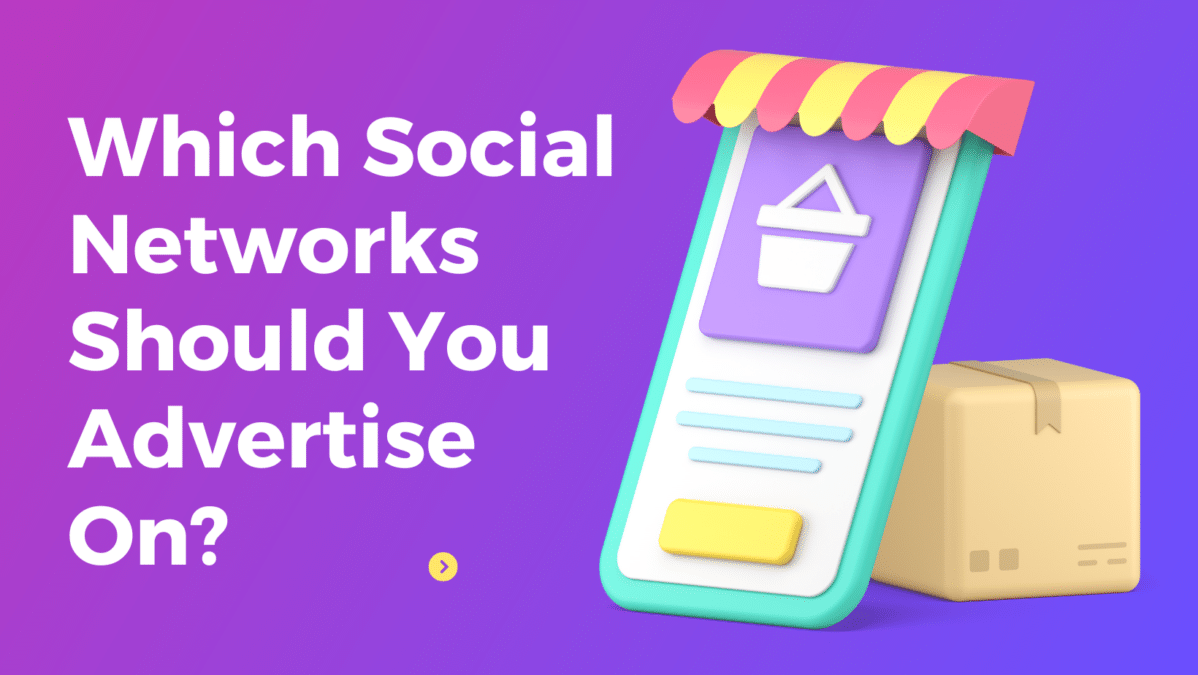
Top 10 Metrics Website Owners Need To Track The Most
March 8, 2022
Chatbots: Guaranteed Ways To Improve User Experience
March 22, 2022Which Social Networks Should You Advertise On?
Discover the three main social media platforms that will work best for advertising
There are tons of social networks to choose from. Each comes with an audience that brings different advertising potential. There’s not a one-size-fits-all platform, so you really need to know who you are trying to target. Based on your business’s buyer personas and marketing goals, certain channels will help your advertisements gain more traction.
Social media is one of the most effective tools you can leverage to meet your marketing objectives. Whether you use it to supplement your existing inbound marketing efforts or to reinvigorate your entire strategy, social ads are a great way to raise your brand awareness and increase your ROI.
Our partners at HubSpot cover three different social media platforms to help you decide when you should and shouldn’t elect to use them in your social media advertising strategy.
Which Social Networks Should You Advertise On?
When deciding which social networks to use, it can be difficult to recommend one platform over another. Instead, it’s best to take a holistic view of your needs, research what each platform has to offer, and go from there.
Some social networks are better equipped for meeting overall marketing needs than others. For instance:
1. Facebook
Facebook has almost 3 billion daily active users, making it one of the most popular social media platforms today. It’s no surprise that 62% of companies leveraged it for advertising and marketing in 2022.
Every business needs a Facebook advertising presence — and there are several reasons why.
The platform has the most powerful tools for optimizing and targeting, enabling marketers to create a true buyer’s journey within the platform. This platform also gives you the most bang for your buck – it has the highest conversion rates (9.2%, to be exact).
Whether you’re a software company or a clothing business, you’ll likely find success on Facebook, especially if you use their ad management tool and create a Facebook marketing strategy that carefully considers your target audiences.
Roughly 19% of Facebook users use the platform to find and shop for products. The majority of users are Gen Xers.
When Shouldn’t You Advertise On Facebook?
Despite being useful for most businesses, there are still times when advertising on the platform is not as beneficial.
For example, if you don’t have a deep understanding of who your target audience is, it might be best to place Facebook on hold until you can gain a thorough understanding of who they are. While ad targeting on Facebook is specific, and the algorithm learns from your leads over time, the process begins with a pre-existing list of groups to target.
2. Instagram
Instagram has around 2 billion active users, and 62.7% of its global users are between 18-34 years old. In terms of user activity, 87% of Instagram users say they take action after seeing a product on Instagram.
Instagram can be very profitable for businesses. It’s more shopping-focused than ever before, from adding new shopping features to dipping its toes into shopping live streams. These efforts aren’t for nothing — according to HubSpot’s survey of 1,000+ marketing professionals, Instagram came in second as the platform with the highest ROI in 2021.
Instagram is also the platform of choice for influencer marketing. And you should know that 61% of consumers trust influencer recommendations more than brand content (38%). Thanks to the rise of nano- and micro-influencers, and the visual nature of the platform, Instagram is an effective hub for influencer marketing.
If you’re an eCommerce business that can produce high-quality visual content or uses influencers in your marketing strategy, Instagram is worth considering.
When Shouldn’t You Advertise On Instagram?
Unlike Facebook, Instagram mostly caters to B2C businesses. If you’re a more corporate business not focused on individual consumer purchases, you’ll likely have some trouble marketing on Instagram and cultivating engagement.
However, users on the app expect high-quality content, so producing these visuals is crucial, regardless of your business type. If you don’t have the time or the means, turning to a different platform will likely bring more success as you dedicate time to learn about Instagram and creating high-quality visual content for future use.
3. YouTube
YouTube boasts an audience of 122 million active users daily. Not only is the platform gigantic, but it’s especially popular amongst younger audiences. Consider this staggering statistic — YouTube’s largest audience is 25 to 34 (20.7%).
In 2022, video content was predicted to command more than half of all web traffic, and it’s expected to get more popular. Now is the time to start thinking about how video fits into your long-term marketing strategy. Nearly 89% of marketers plan to invest in video more than any other format, up from around 30% in 2022.
While YouTube is the obvious platform for long-form video content, it’s also gearing up to compete with TikTok and Instagram in the short-form video game. In July 2021, it released YouTube Shorts, enabling users to create bite-sized, 60 seconds-or-less videos, and they have become wildly popular.
Shorts are a relatively low-stakes strategy to explore. In fact, 83% of marketers plan to increase their investment in them this year.
When Shouldn’t You Advertise On Youtube?
Like Facebook, the possibilities for exposure on YouTube are incredibly high because of its massive user base.
For YouTube ads to “work,” you need a solid understanding of your audience — who they are, where they live, and their interests or pain points. Once you’ve done this homework, you’re in a better position to leverage YouTube’s sophisticated targeting options.
(Sources: HubSpot, Social Pilot, Data Reportal, Demand Sage, Lemon Light,
Which Social Networks Provide the Highest ROI?
According to a HubSpot survey, Facebook took the top spot as the highest ROI-generating platform in 2021. It should come as no surprise, then, that 64% of social media marketers are planning to invest in Facebook more than any other platform, up from only 25% in 2022.
It’s clear that short-form video is here to stay — and many social media platforms are looking to prioritize it in the new year.
Choosing the Right Social Network
Choosing the “right” platforms to leverage for your marketing strategy depends on your overall business goals and business type. Some platforms will help your ads gain more traction, while others may not be as impactful.
If you analyze your campaign metrics and pay attention to the digital ad campaigns you run, you’ll get the information you need to make educated decisions about your marketing efforts. You can determine which platform offers the best results for your business and use that to inform future media placements.
Social Commerce Stats You Should Know
By Leslie Radford
**Updated November 2023




